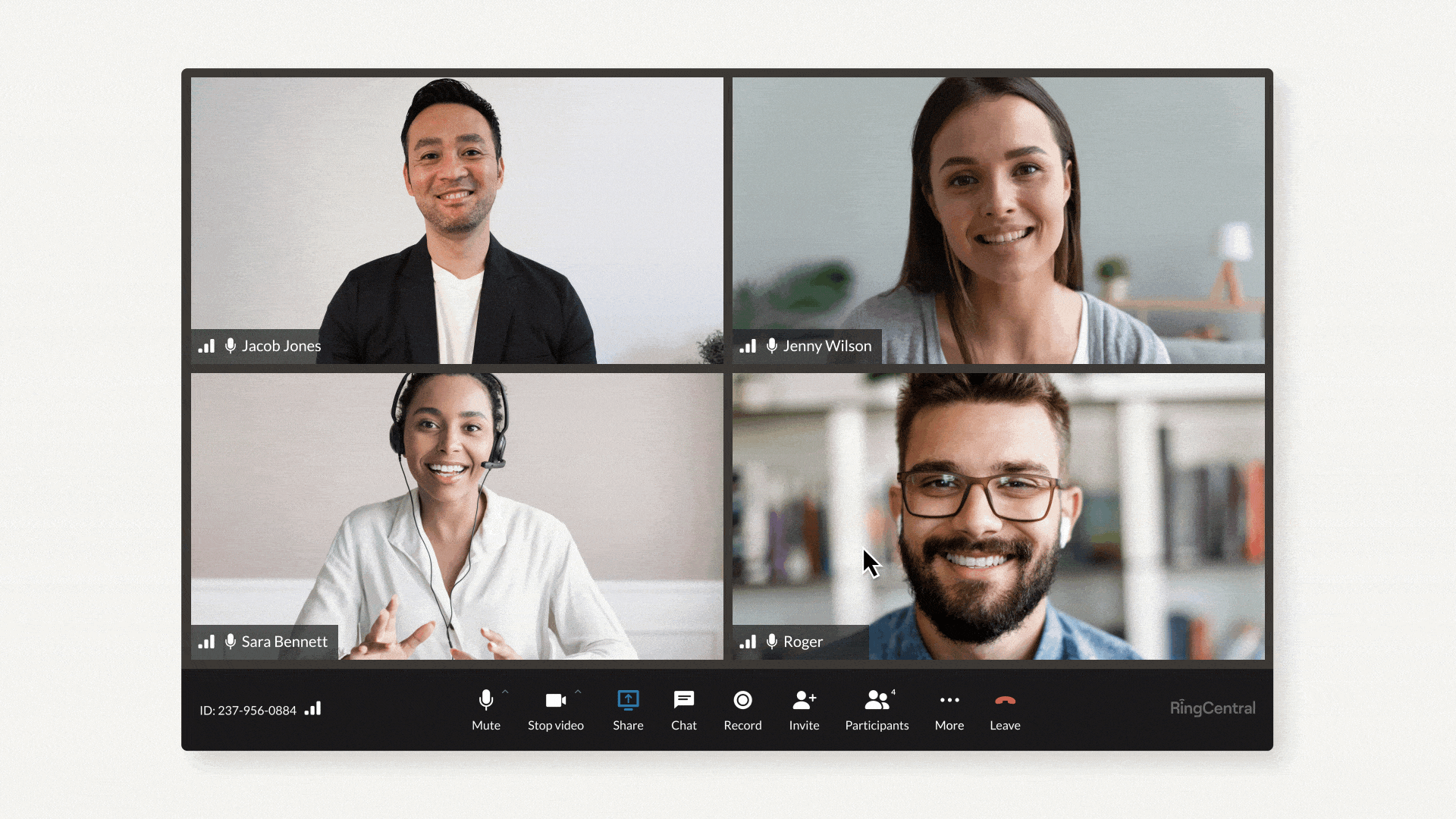At a glance:
- Expect more mobile innovations for voice calling
- Voice-enabled hardware will supercharge productivity
- AI will make voice an ambient experience
- 5G will change what’s possible with calling
- Conversational AI will take efficiencies to new levels
There’s been a silent, emerging disruptor in the backdrop of headline grabbing video meetings, artificial intelligence, and robotic automation: the return of the humble phone call and SMS text message.
In 2021, RingCentral users clocked in over six billion phone calls, totalling 315 million hours on the phone. We also saw nearly 180 million SMS messages sent in 2021. This is a huge increase over 2020, the year of lockdowns where calling and SMS volumes already experienced a massive surge compared to 2019.
With that in mind, let’s look at five predictions on how voice technology will disrupt the workplace in 2022.
1. Expect more mobile innovations for voice calling
Smartphone use in the office became prevalent in the past decade, but some phone power users were left behind. Think administrative assistants who sit in front offices answering various phone lines, or frontline operations who manage many critical phone lines for emergencies). In 2022, we expect this gap to close.
Here at RingCentral, we design our features for the mobile experience first because we know it’s more difficult to design for a smaller screen footprint. After designing the mobile experience, we then scale out to designing the desktop experience of each feature.

We’re taking our mobile app to the next level by launching next-gen features like native dialer, which is in market with AT&T Business as of 2021. As a AT&T subscriber you can now get advanced business (PBX) calling features from your native dialer.
RingCentral is also the first to market with mobile and desktop HUD functionality, untethering advanced phone capabilities for users such as receptionists and admins mobile for the first time.
Mobility and flexibility will be a key theme in 2022, especially as businesses become increasingly remote and hybrid.
2. Voice-enabled hardware will supercharge productivity
65% of 25-49-year-olds speak to their voice-enabled devices at least once per day. This future of voice study revealed that 98% of respondents expect their reliance on voice technology to either increase or stay the same in the coming years.

For example, cars are the second-most frequent area to use voice assistants (after mobile phones), with 45% of US adults speaking to one or more devices while driving. This is nearly double the largest in-home segment, which is smart speakers at 23% Nonetheless, 34% of smart speakers are owners.
While innovations like Apple Carplay and Android Auto are already here, be sure to expect even more voice-assisted innovations coming to the workplace, like replying to a phone call with a voice message, speech-to-text voice notes, voice push notifications, and voice-enabled chatbots.
3. AI will make voice an ambient experience
Voice tech is getting smarter at recognizing patterns, making predictions, distinguishing voices, and using this intelligence to make conversations more seamless and efficient.
In the near future, our interactions with technology will evolve from typing and tapping into more natural forms of expression like speaking. Voice-activated tech will be found everywhere—from the office to the car to retail stores.
At RingCentral, we use AI in our voice & video products every day, and we plan to introduce even more exciting ambient experiences in 2022.

Some of our current AI-driven features are:
- Live transcriptions: Turn entire meeting conversations into written words in real time.
- Meetings summaries: Provides users with a recap of the voice conversation and an auto-generated short-form summary, video highlight reel, and keywords.
- Robocall mitigation and spam blocking: Using predictive AI, industry tracebacks, and the STIR/SHAKEN framework, we stop fraudulent robocalls and fraudulent spam attacks before they ever reach users.
- RingOut and number masking: With a RingCentral business line, phone users can place calls with their RingCentral phone number instead of their personal number. This maintains privacy and keeps personal and business identities separate.
- Emergency response locations for E911 calls: RingCentral delivers enhanced location accuracy and provides unique caller identification information on E911 calls for users in the U.S., meeting critical compliance requirements.
4. 5G will change what’s possible with calling
5G is significantly faster than 4G. But what does this mean for calling?
Call experiences can fluctuate due to latency issues. Bad network latency can impact both voice and video calls as even a few milliseconds of network latency can result in delays and compromised quality voice between callers.

5G brings calling experiences beyond just voice. During a regular phone call, both sides could interact with content within the native call screen (without needing a special app). You could both browse the web together, look at photos or videos from each other’s phones, or play a game together.
What’s more, businesses could improve customer support calls by easily sharing drawings or augmented reality overlays to guide their customers during phone calls.
5G will transform voice calls to reflect more human experiences – being able to have a more natural, human experience when talking to someone. It’s like you are right there in person.
5. Conversational AI will take efficiencies to new levels
Conversational artificial intelligence (AI) refers to technologies like chatbots or virtual agents that users can talk to or send SMS with a bot automatically.

AI Chatbot smart digital customer service application concept. Computer or mobile device application using artificial intelligence chat bot automatic reply online message to help customers instantly.
They use large volumes of data, machine learning, and natural language processing to help imitate human interactions, recognizing speech and text inputs and translating their meanings across various languages. For example:
Online customer support
Online chatbots are replacing human agents along the customer journey. They answer frequently asked questions (FAQs) around topics like shipping, or provide personalized advice, cross-sell products, and suggest sizes for users.
Accessibility
Companies become more accessible by reducing entry barriers, particularly for users who use assistive technologies. Commonly used features of conversation AI for these groups are text-to-speech dictation and language translation.
Health care
Conversational AI can make health care services more accessible and affordable for patients, while also improving operational efficiency and the administrative process such as claim processing.
The future of voice is now
It may have been team messaging apps and video meetings that made headlines over the past two years, but in 2022, we predict that voice will be more important than ever – especially as it provides a quicker and more seamless way of communicating.
We can expect to see more people jumping between the messaging, video, and voice communication modes as hybrid work and remote work become the norm.
Originally published Jan 10, 2022
Looking For Startup Consultants ?
Call Pursho @ 0731-6725516
Telegram Group One Must Follow :
For Startups: https://t.me/daily_business_reads







